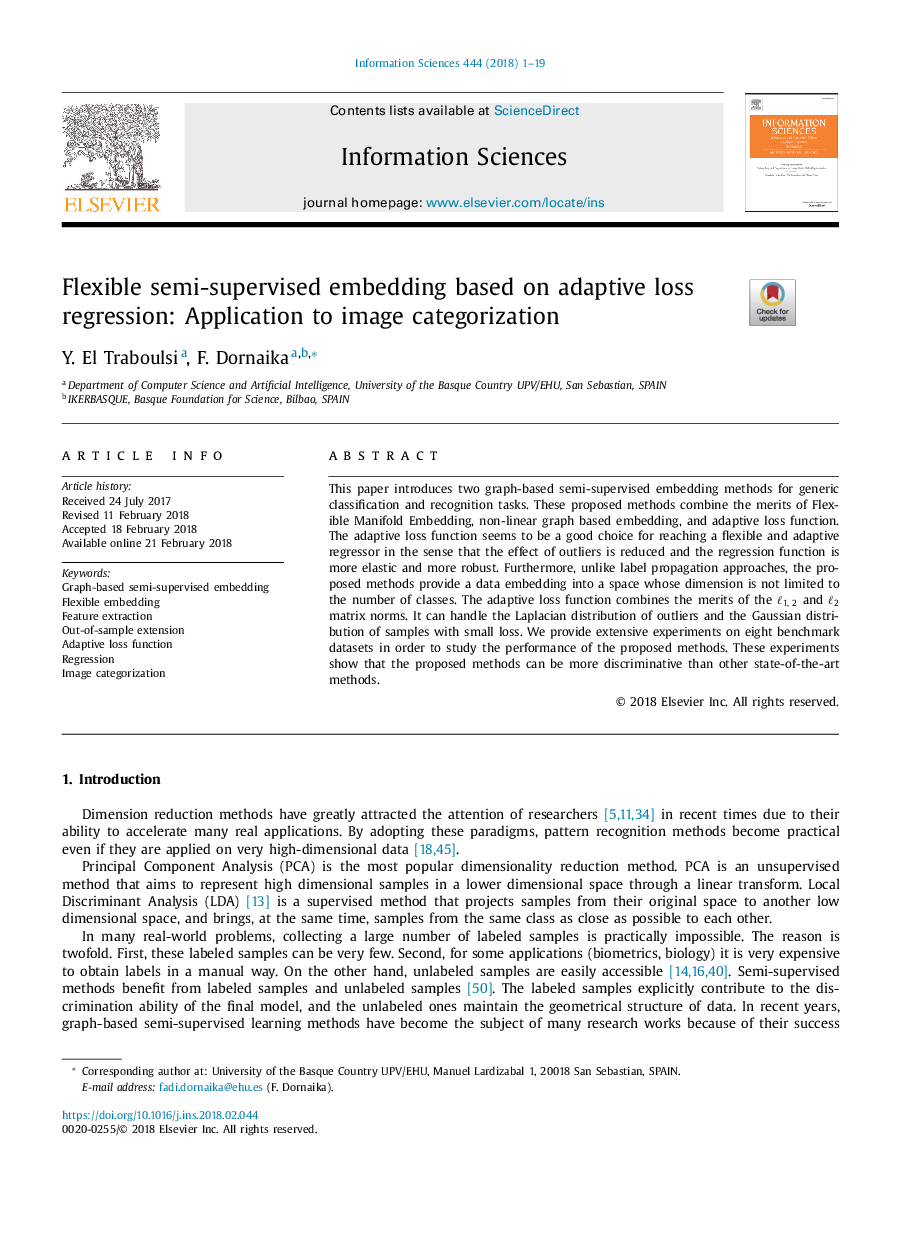| Article ID | Journal | Published Year | Pages | File Type |
|---|---|---|---|---|
| 6856522 | Information Sciences | 2018 | 19 Pages |
Abstract
This paper introduces two graph-based semi-supervised embedding methods for generic classification and recognition tasks. These proposed methods combine the merits of Flexible Manifold Embedding, non-linear graph based embedding, and adaptive loss function. The adaptive loss function seems to be a good choice for reaching a flexible and adaptive regressor in the sense that the effect of outliers is reduced and the regression function is more elastic and more robust. Furthermore, unlike label propagation approaches, the proposed methods provide a data embedding into a space whose dimension is not limited to the number of classes. The adaptive loss function combines the merits of the â1, 2 and â2 matrix norms. It can handle the Laplacian distribution of outliers and the Gaussian distribution of samples with small loss. We provide extensive experiments on eight benchmark datasets in order to study the performance of the proposed methods. These experiments show that the proposed methods can be more discriminative than other state-of-the-art methods.
Related Topics
Physical Sciences and Engineering
Computer Science
Artificial Intelligence
Authors
Y. El Traboulsi, F. Dornaika,
